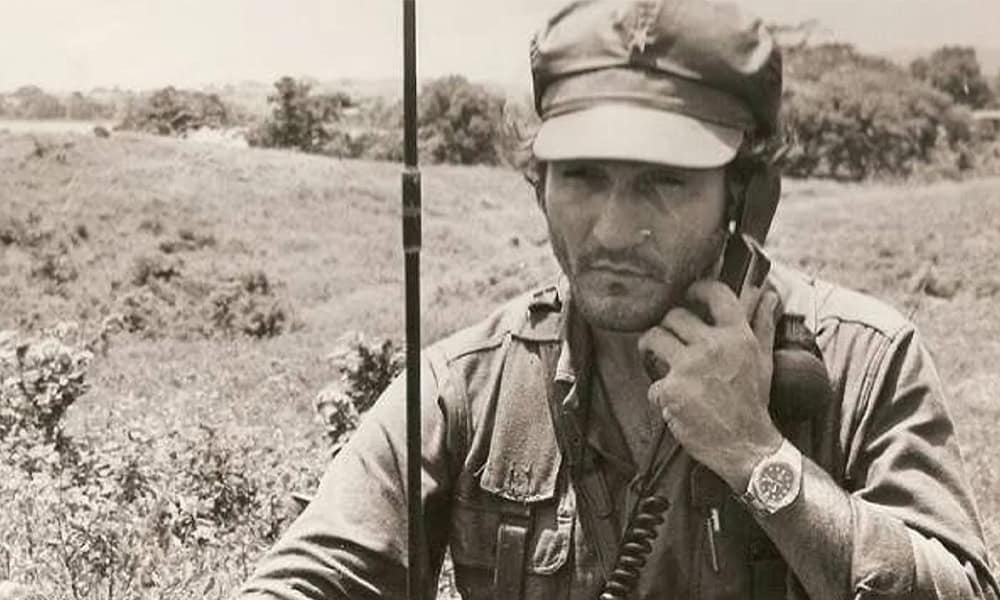On this date, forty years ago, Linda Frazier, a reporter for the Tico Times was killed doing her job.For those unfamiliar with has become to be known as the “La Penca bombing” we have republished this Tico Times article from 2006.
On May 30, 1984, The Tico Times lived its darkest hour. Nicaraguan rebel leader Edén Pastora had called a press conference to air complaints that he was being pressured by the United States to join Nicaraguan contra rebels based out of Honduras. A group of more than 20 journalists traveled to Boca Tapada in the northern part of the country to make the canoe ride to Pastora s jungle encampment of La Penca, on the Nicaraguan side of the San Juan River.
On one of the canoes was Per Anker Hansen, a Danish photojournalist, who was conspicuous for a large aluminum camera case which he cared for meticulously, covering it with plastic to avoid getting it wet.
When the journalists arrived at La Penca in the early evening, Pastora welcomed them in a shack built on stilts, where, despite the guerrilla leader s protestation that he wanted to hold the press conference in the morning, reporters began to pepper him with questions.
Some reporters in the back of the press scrum noticed that Hansen seemed to be having trouble with his camera, and he left the room. Moments later, an earsplitting explosion rocked the scene.
Two Costa Ricans journalists, Channel 6 cameraman Jorge Quirós and soundman Evelio Sequeira, died at the scene, as did several of Pastora s guerrillas. Tico Times reporter Linda Frazier, wife of AP Correspondent Joe Frazier, who was covering the contras in Nicaragua at the time, and mother of a son, 10-year-old Chris, bled to death before reaching the hospital at Ciudad Quesada. Guerrillas handling the evacuation gave preference to those they felt had a chance of surviving; Linda was loaded onto the last boat, almost at dawn on the following day.
At least a dozen other journalists were seriously wounded. Pastora, one of the first evacuated, escaped with minor injuries.
Help Never Came
It took all night to evacuate the victims by canoe and transfer them to ambulances for the long, bumpy ride to Ciudad Quesada. Throughout the night, The Tico Times was assured by U.S. Embassy officials that help requested by the first victims to reach the hospital was on its way, in the form of rescue helicopters to ferry the wounded to the hospital. It later turned out the helicopters had never left Panama.
At the hospital, Per Anker Hansen, with superficial wounds on his arms, calmly answered reporters questions from a wheelchair. He was last seen checking out of a downtown San José hotel, disappearing thereafter without a trace.
Almost a day passed before suspicion fell on the Dane. A manhunt ensued as reports began circulating about his true identity. One report, attributed to sources in the U.S. government, had the suspected bomber as a member of the Basque terrorist group ETA.
Various other speculative reports followed, including one that held that the bomber belonged to a Uruguayan guerrilla group. The local investigation into the bombing was hampered by the fact that the blast took place in Nicaraguan territory, and by the time investigators reached the scene, evidence had been removed. Several Tico Times requests that the FBI aid in the investigation were rebuffed.
Honey and Avirgan Start Investigating
One of the victims of the bombing, ABC cameraman Tony Avirgan, and his journalist wife Martha Honey began their own investigation into the bombing.
Based on the testimony of Carlos Rojas, a carpenter who acted as a go-between between the couple and alleged members of the terrorist group that carried out the bombing, Avirgan and Honey reported that bombing was the work anti-Sandinista rebels under the leadership of U.S. farmer John Hull, depicted as a key liaison between Nicaraguan contra groups in northern Costa Rica and the CIA.
Hull sued the couple in Costa Rican courts. It was dismissed and the couple counter-sued in U.S. federal court in conjunction with the public-interest law firm the Christic Institute, alleging that Hull and 29 others, many later implicated in the Iran-Contra scandal,were part of a broad-ranging conspiracy to undermine the U.S. Constitution. The suit was dismissed.
Finally, A Break
Years passed with no conclusive evidence showing the true identity of the bomber, until a reporter for The Miami Herald, Juan Tamayo, caught a break. While in Paris in 1994, he met the member of Argentine People s Army, who said he recognized the bomber as a fellow member of the leftist group, Vital Roberto Gaguine.
Meanwhile, Doug Vaughn, an investigator for the Christic Institute, had found a thumbprint Per Anker Hansen had given to the Panamanian Department of Motor Vehicles for a driver s license application.
Investigators, who knew Hansen had spent time in Panama, had failed to find the thumbprint because it was filed under A for Anker instead of H for Hansen.
Vaughn compared notes with Tamayo, who sent the print to Argentine journalists, who gave it to police, who confirmed it belonged to Gaguine, who, they said, had died in a 1989 attack by leftist guerrillas on the Argentine barracks of La Tarbaca.
Further confirmation came when Costa Rican congresswoman Sonia Rodríguez, head of a legislative commission investigating La Penca, traveled to Buenos Aires to confer with Argentine authorities. They provided a previously undisclosed photo of Gaguine that left little doubt that he was the author of La Penca.
Subsequent investigations by journalists revealed that Gaguine had worked with Sandinista militia under Nicaragua s Minister of Interior Tomás Borge, training militia members. However, many in and out of Costa Rica still insist the CIA was somehow involved. Many, including some of the victims and their families, maintain that the tangled web of interests in the region at the time of the bombing could have made for a marriage of convenience in the interest of eliminating Pastora.






